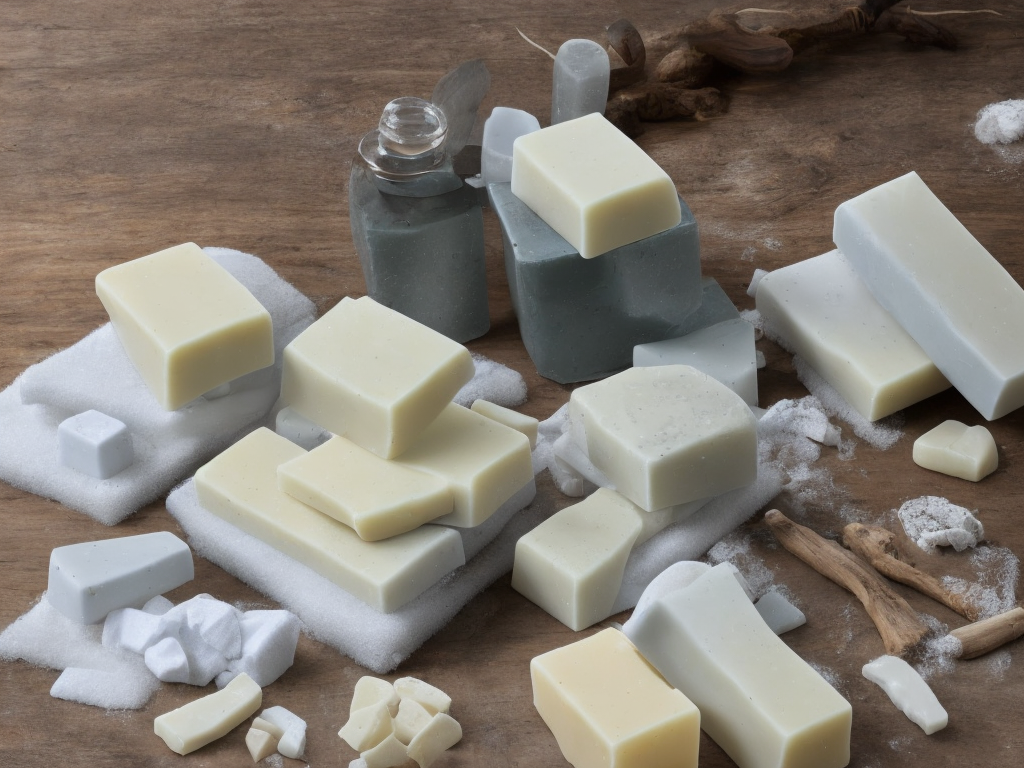
Soaps and detergents are cleaning agents used in households and industries for cleaning various surfaces, clothes, and dishes. Both soaps and detergents perform the same function of removing dirt, grease, and stains but have different chemical compositions and properties. In this article, we will discuss the key differences between soaps and detergents.
Composition:
Soaps are made by saponification of animal fats or vegetable oils with an alkali like sodium hydroxide or potassium hydroxide. The reaction produces soap molecules consisting of a long hydrocarbon chain attached to a carboxylate group. The hydrocarbon chain is nonpolar and hydrophobic, while the carboxylate group is polar and hydrophilic. Soaps are hence capable of emulsifying oils and fats in water and trapping them in micelles.
Detergents, on the other hand, are synthetic compounds made from petrochemicals or oleochemicals. They have a similar molecular structure as soaps but have additional functional groups like sulfates, sulfonates, or phosphates. These groups provide more stability and solubility to the detergents and increase their cleaning efficiency.
Properties:
Soaps are natural cleaners and are mild on the skin. They have a high pH and are hence less acidic than detergents. Soaps are biodegradable and do not harm the environment. However, soaps have some limitations like they do not remove hard water minerals and can react with metal ions to form unwanted precipitates.
Detergents are synthetic cleaners and are harsher on the skin than soaps. They have a lower pH and are more acidic than soaps. Detergents are more effective than soaps in cleaning hard water and removing tough stains like oil and grease. Detergents are non-biodegradable and can harm aquatic life if disposed of improperly.
Foaming:
Soaps foam better than detergents due to the presence of natural surfactants like glycerol in their composition. The foam produced by soaps traps air and creates a layer on the surface, which enhances the cleaning process.
Detergents also produce foam, but they require less water to form a stable lather. The foam produced by detergents is more stable and does not break easily, making them suitable for high-efficiency washing machines and dishwashers.
Compatibility:
Soaps are not compatible with hard water due to the presence of calcium and magnesium ions in the water. They react with the ions to form insoluble precipitates, which can cause clogging of pipes and reduce the effectiveness of the cleaning process.
Detergents, on the other hand, are compatible with hard water due to the presence of chelating agents like EDTA or NTA in their composition. These agents bind to the hard water ions and prevent them from reacting with the detergent molecules.
Usage:
Soaps are commonly used for handwashing, bathing, and cleaning delicate fabrics like silk and wool. They are also used in laundry detergents for their emulsifying properties.
Detergents are used in washing machines, dishwashers, and cleaning surfaces like floors, walls, and countertops. They are also used in industrial cleaning applications like oil spill cleanup, metal cleaning, and car washes.
Conclusion:
Soaps and detergents are two different types of cleaning agents used for various applications. Soaps are natural cleaners made from animal fats or vegetable oils, while detergents are synthetic compounds made from petrochemicals or oleochemicals. Soaps are mild and biodegradable but have limitations in hard water and metal ion reactions. Detergents are more efficient and compatible with hard water but are harsher on the skin and non-biodegradable. The choice of the cleaning agent depends on the application, the type of surface, the cleaning requirements, and the environmental impact.
 Self-Instruct
Self-Instruct